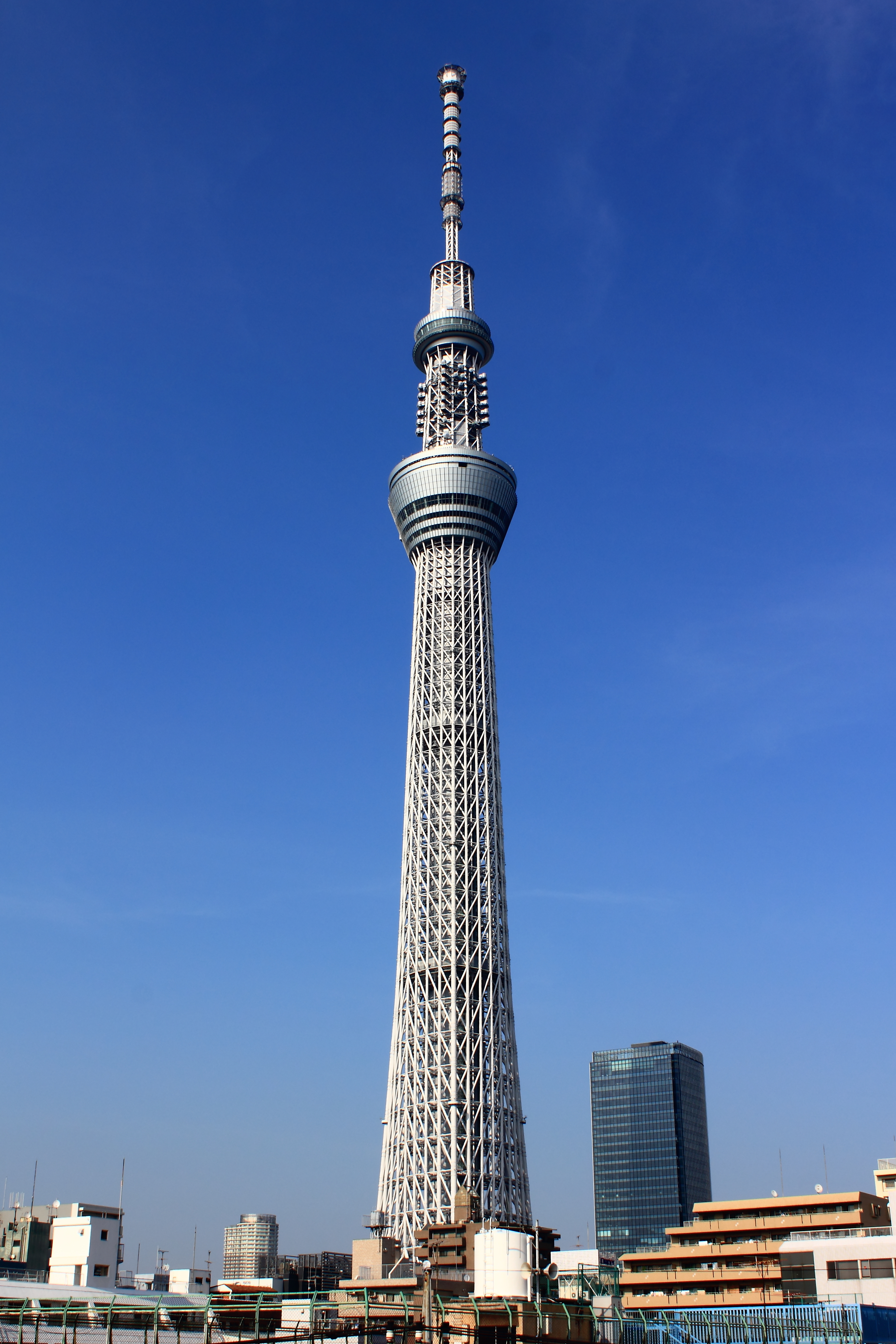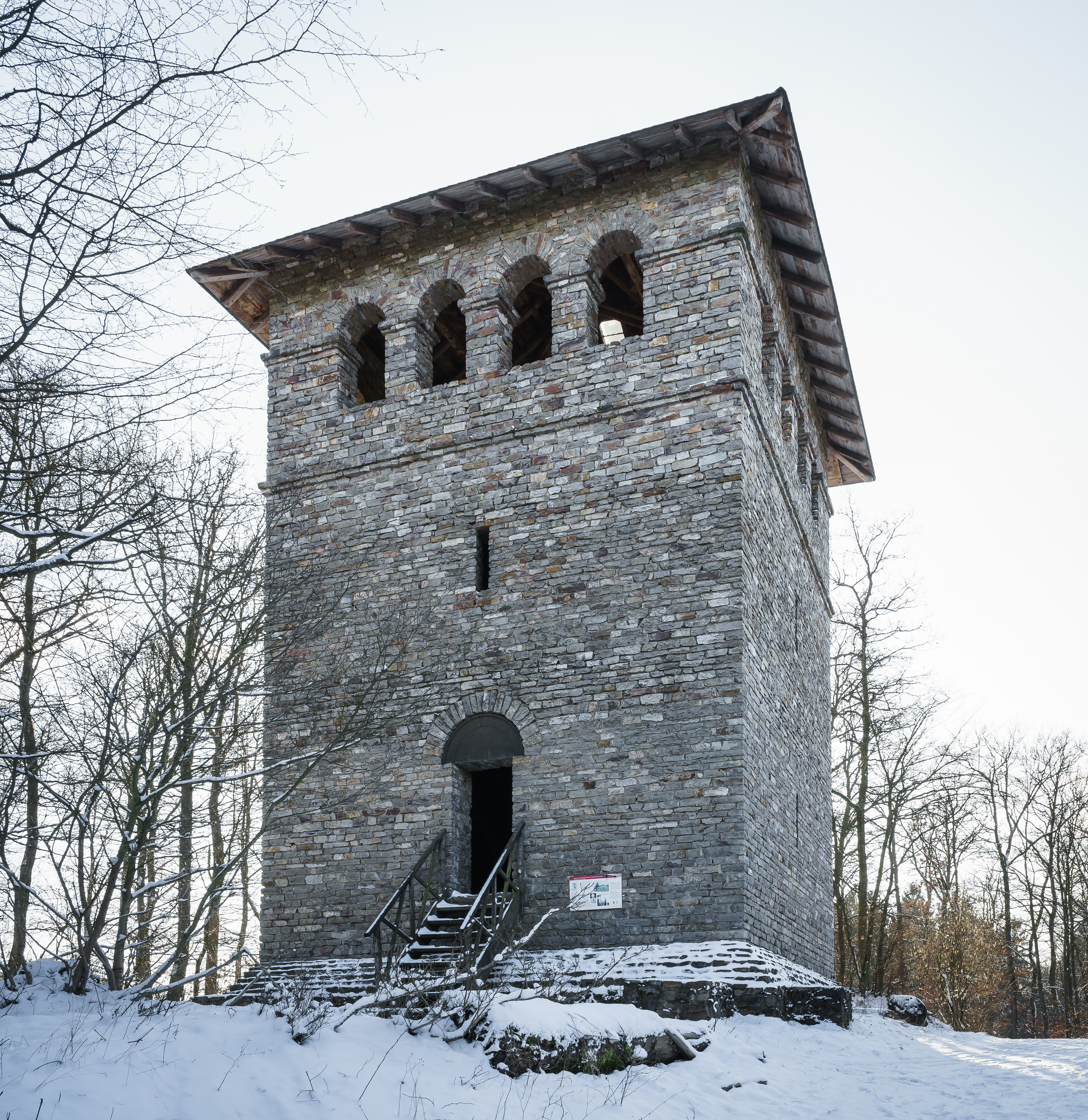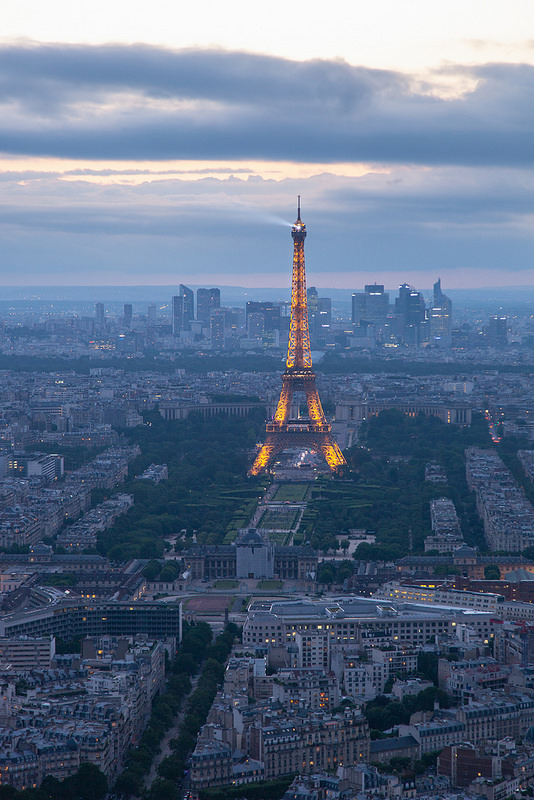Tower on:
[Wikipedia]
[Google]
[Amazon]


 A tower is a tall
A tower is a tall
 Other well known towers include the Leaning Tower of Pisa in
Other well known towers include the Leaning Tower of Pisa in Dana Thomas, "Towers to the Heavens"
''Newsweek'', 2003-11-15

 A tower is a tall
A tower is a tall structure
A structure is an arrangement and organization of interrelated elements in a material object or system, or the object or system so organized. Material structures include man-made objects such as buildings and machines and natural objects such a ...
, taller than it is wide, often by a significant factor. Towers are distinguished from masts by their lack of guy-wires and are therefore, along with tall buildings, self-supporting structures.
Towers are specifically distinguished from building
A building, or edifice, is an enclosed structure with a roof and walls standing more or less permanently in one place, such as a house or factory (although there's also portable buildings). Buildings come in a variety of sizes, shapes, and func ...
s in that they are built not to be habitable but to serve other functions using the height of the tower. For example, the height of a clock tower improves the visibility of the clock, and the height of a tower in a fortified building such as a castle increases the visibility of the surroundings for defensive purposes. Towers may also be built for observation, leisure, or telecommunication
Telecommunication is the transmission of information by various types of technologies over wire, radio, optical, or other electromagnetic systems. It has its origin in the desire of humans for communication over a distance greater than that ...
purposes. A tower can stand alone or be supported by adjacent buildings, or it may be a feature on top of a larger structure or building.
Etymology
Old English
Old English (, ), or Anglo-Saxon, is the earliest recorded form of the English language, spoken in England and southern and eastern Scotland in the early Middle Ages. It was brought to Great Britain by Anglo-Saxon settlers in the mid-5th ...
''torr'' is from Latin
Latin (, or , ) is a classical language belonging to the Italic languages, Italic branch of the Indo-European languages. Latin was originally a dialect spoken in the lower Tiber area (then known as Latium) around present-day Rome, but through ...
''turris'' via Old French
Old French (, , ; Modern French: ) was the language spoken in most of the northern half of France from approximately the 8th to the 14th centuries. Rather than a unified language, Old French was a linkage of Romance dialects, mutually intel ...
''tor''. The Latin term together with Greek τύρσις was loaned from a pre-Indo-European Mediterranean language, connected with the Illyrian toponym
Βου-δοργίς. With the Lydian toponyms Τύρρα, Τύρσα, it has been connected with the ethnonym Τυρρήνιοι as well as with ''Tusci'' (from ''*Turs-ci''), the Greek and Latin names for the Etruscans
The Etruscan civilization () was developed by a people of Etruria in ancient Italy with a common language and culture who formed a federation of city-states. After conquering adjacent lands, its territory covered, at its greatest extent, roug ...
(Kretschmer Glotta 22, 110ff.)
History
Towers have been used by mankind since prehistoric times. The oldest known may be the circular stone tower in walls of Neolithic Jericho (8000 BC). Some of the earliest towers were ziggurats, which existed inSumerian architecture
The architecture of Mesopotamia is ancient architecture of the region of the Tigris– Euphrates river system (also known as Mesopotamia), encompassing several distinct cultures and spanning a period from the 10th millennium BC (when the first pe ...
since the 4th millennium BC. The most famous ziggurats include the Sumerian Ziggurat of Ur, built in the 3rd millennium BC, and the Etemenanki, one of the most famous examples of Babylonian architecture.
Some of the earliest surviving examples are the broch structures in northern Scotland
Scotland (, ) is a country that is part of the United Kingdom. Covering the northern third of the island of Great Britain, mainland Scotland has a border with England to the southeast and is otherwise surrounded by the Atlantic Ocean to ...
, which are conical tower houses. These and other examples from Phoenicia
Phoenicia () was an ancient thalassocratic civilization originating in the Levant region of the eastern Mediterranean, primarily located in modern Lebanon. The territory of the Phoenician city-states extended and shrank throughout their his ...
n and Roman
Roman or Romans most often refers to:
* Rome, the capital city of Italy
* Ancient Rome, Roman civilization from 8th century BC to 5th century AD
*Roman people, the people of ancient Rome
*''Epistle to the Romans'', shortened to ''Romans'', a lett ...
cultures emphasised the use of a tower in fortification and sentinel roles. For example, the name of the Moroccan city of Mogador
Essaouira ( ; ar, الصويرة, aṣ-Ṣawīra; shi, ⵜⴰⵚⵚⵓⵔⵜ, Taṣṣort, formerly ''Amegdul''), known until the 1960s as Mogador, is a port city in the western Moroccan region of Marakesh-Safi, on the Atlantic coast. It ...
, founded in the first millennium BC, is derived from the Phoenician word for watchtower ('migdol'). The Romans utilised octagonal towers as elements of Diocletian's Palace in Croatia
, image_flag = Flag of Croatia.svg
, image_coat = Coat of arms of Croatia.svg
, anthem = " Lijepa naša domovino"("Our Beautiful Homeland")
, image_map =
, map_caption =
, capi ...
, which monument dates to approximately 300 AD, while the Servian Walls (4th century BC) and the Aurelian Walls (3rd century AD) featured square ones. The Chinese used towers as integrated elements of the Great Wall of China
The Great Wall of China (, literally "ten thousand ''li'' wall") is a series of fortifications that were built across the historical northern borders of ancient Chinese states and Imperial China as protection against various nomadic grou ...
in 210 BC during the Qin Dynasty. Towers were also an important element of castles.
 Other well known towers include the Leaning Tower of Pisa in
Other well known towers include the Leaning Tower of Pisa in Pisa, Italy
Pisa ( , or ) is a city and '' comune'' in Tuscany, central Italy, straddling the Arno just before it empties into the Ligurian Sea. It is the capital city of the Province of Pisa. Although Pisa is known worldwide for its leaning tower, the cit ...
built from 1173 until 1372, the Two Towers in Bologna, Italy
Bologna (, , ; egl, label= Emilian, Bulåggna ; lat, Bononia) is the capital and largest city of the Emilia-Romagna region in Northern Italy. It is the seventh most populous city in Italy with about 400,000 inhabitants and 150 different na ...
built from 1109 until 1119 and the Towers of Pavia (25 survive), built between 11th and 13th century. The Himalayan Towers are stone towers located chiefly in Tibet built approximately 14th to 15th century.
''Newsweek'', 2003-11-15
Mechanics
Up to a certain height, a tower can be made with the supporting structure with parallel sides. However, above a certain height, the compressive load of the material is exceeded, and the tower will fail. This can be avoided if the tower's support structure tapers up the building. A second limit is that of buckling—the structure requires sufficient stiffness to avoid breaking under the loads it faces, especially those due to winds. Many very tall towers have their support structures at the periphery of the building, which greatly increases the overall stiffness. A third limit is dynamic; a tower is subject to varying winds, vortex shedding, seismic disturbances etc. These are often dealt with through a combination of simple strength and stiffness, as well as in some cases tuned mass dampers to damp out movements. Varying or tapering the outer aspect of the tower with height avoids vibrations due to vortex shedding occurring along the entire building simultaneously.Functions
Although not correctly defined as towers, many modern high-rise buildings (in particular skyscraper) have 'tower' in their name or are colloquially called 'towers'. Skyscrapers are more properly classified as 'buildings'. In theUnited Kingdom
The United Kingdom of Great Britain and Northern Ireland, commonly known as the United Kingdom (UK) or Britain, is a country in Europe, off the north-western coast of the continental mainland. It comprises England, Scotland, Wales and ...
, tall domestic buildings are referred to as tower blocks. In the United States
The United States of America (U.S.A. or USA), commonly known as the United States (U.S. or US) or America, is a country Continental United States, primarily located in North America. It consists of 50 U.S. state, states, a Washington, D.C., ...
, the original World Trade Center had the nickname the Twin Towers, a name shared with the Petronas Twin Towers in Kuala Lumpur
, anthem = ''Maju dan Sejahtera''
, image_map =
, map_caption =
, pushpin_map = Malaysia#Southeast Asia#Asia
, pushpin_map_caption =
, coordinates =
, sub ...
. In addition some of the structures listed below do not follow the strict criteria used at List of tallest towers.
Strategic advantages
The tower throughout history has provided its users with an advantage in surveying defensive positions and obtaining a better view of the surrounding areas, including battlefields. They were constructed on defensive walls, or rolled near a target (see siege tower). Today, strategic-use towers are still used at prisons, military camps, and defensive perimeters.Potential energy
By using gravity to move objects or substances downward, a tower can be used to store items or liquids like a storage silo or a water tower, or aim an object into the earth such as a drilling tower. Ski-jump ramps use the same idea, and in the absence of a natural mountain slope or hill, can be human-made.Communication enhancement
In history, simple towers like lighthouses, bell towers, clock towers, signal towers and minarets were used to communicate information over greater distances. In more recent years, radio masts and cell phone towers facilitate communication by expanding the range of the transmitter. The CN Tower in Toronto, Ontario, Canada was built as a communications tower, with the capability to act as both a transmitter and repeater.Transportation support
Towers can also be used to support bridges, and can reach heights that rival some of the tallest buildings above-water. Their use is most prevalent in suspension bridges and cable-stayed bridges. The use of the pylon, a simple tower structure, has also helped to build railroad bridges, mass-transit systems, and harbors.Control tower
Air traffic control (ATC) is a service provided by ground-based air traffic controllers who direct aircraft on the ground and through a given section of controlled airspace, and can provide advisory services to aircraft in non-controlled air ...
s are used to give visibility to help direct aviation traffic.
Other
* To access tall or high objects: launch tower, service tower, service structure, scaffold, tower crane. * To access atmospheric conditions aloft: wind turbine, meteorological measurement tower, tower telescope, solar power station * To lift high tension cables for electrical power distribution transmission tower * To take advantage of the temperature gradient inherent in a height differential: cooling tower * To expel and disperse potentially harmful gases and particulates into the atmosphere: chimney * To protect from exposure: BREN Tower, lightning rod tower * For industrial production: shot tower * For surveying: Survey tower * To drop objects:Drop tube
In physics and materials science, a drop tower or drop tube is a structure used to produce a controlled period of weightlessness for an object under study. Air bags, polystyrene pellets, and magnetic or mechanical brakes are sometimes used to ...
(drop tower), bomb tower, diving platform
* To test height-intensive applications: elevator test tower
* To improve structural integrity: thyristor tower
A valve hall is a building which contains the valves of the static inverters of a high-voltage direct current plant. The valves consist of thyristors, or at older plants, mercury arc rectifiers. Mercury arc rectifiers are usually supported by i ...
* To mimic towers or provide height for training purposes: fire tower, parachute tower
* As art: Shukhov Tower
* For recreation: rock climbing tower
* As a symbol: Tower of Babel, The Tower (Tarot card), church tower
The term "tower" is also sometimes used to refer to firefighting equipment with an extremely tall ladder designed for use in firefighting/rescue operations involving high-rise buildings.
Gallery
See also
General
*Additionally guyed tower
A guyed mast or guyed tower is a tall thin vertical structure that depends on guy lines (diagonal tensioned cables attached to the ground) for stability. The mast itself has the compressive strength to support its own weight, but does not ha ...
* Bell tower
* Inclined towers
Incline, inclined, inclining, or inclination may refer to:
* Grade (slope), the tilt, steepness, or angle from horizontal of a topographic feature (hillside, meadow, etc.) or constructed element (road, railway, field, etc.)
* Slope, the tilt, stee ...
* Observation tower
* Partially guyed tower
* World's tallest structures
* Spire
* Tower house
* List of tallest towers in the world
Several extant building fulfill the engineering definition of a tower: "a tall human structure, always taller than it is wide, for public or regular operational access by humans, but not for living in or office work, and are ''self-supporting ...
Warfare
* Battery tower *Bergfried
''Bergfried'' (plural: ''bergfriede''; English: ''belfry''; French: ''tour-beffroi''; Spanish: ''torre del homenaje'') is a tall tower that is typically found in castles of the Middle Ages in German-speaking countries and in countries under Germ ...
* Breaching tower
* Butter-churn tower
* Flanking tower
* Fortified tower
A fortified tower (also defensive tower or castle tower or, in context, just tower) is one of the defensive structures used in fortifications, such as castles, along with curtain walls. Castle towers can have a variety of different shapes and fu ...
* Gate tower
* Turret
Turret may refer to:
* Turret (architecture), a small tower that projects above the wall of a building
* Gun turret, a mechanism of a projectile-firing weapon
* Objective turret, an indexable holder of multiple lenses in an optical microscope
* M ...
* Watchtower
* Wall tower
References
Further reading
* Fritz Leonhardt (1989), ''Towers: a historical survey'', Butterworth Architecture, 343 pages.External links
{{Authority control sq:Kulla